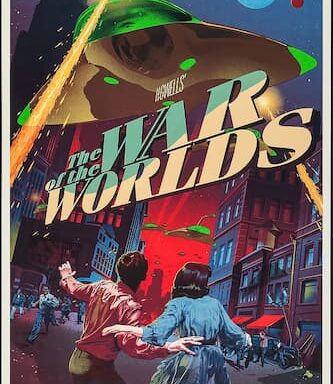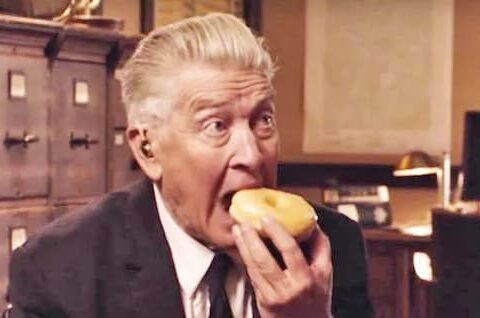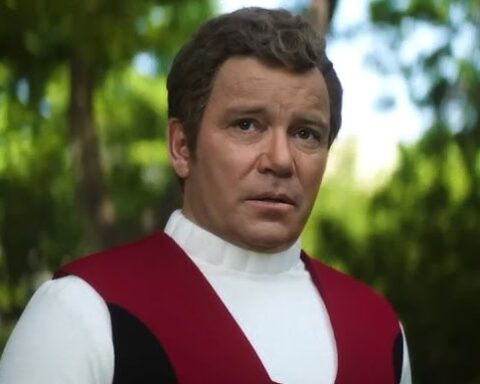Aron Eisenberg’s sad passing is something of a sorry milestone, in that he is the first major actor of the 90s Star Trek era (DS9, Voyager, TNG) to pass away, at least as far as I’m aware.
It’s a sad loss. And Eisenberg’s DS9 character – Nog – was one of the best written and best portrayed characters of all the shows.
For the record, Deep Space Nine is – in my permanent opinion – the very best of the Star Trek shows. And it’s a show in which pretty much every single character is a key part of why the series worked so well: Nog being one of those key characters, one of those key threads in the rich tapestry.
I watched DS9 religiously when I was growing up: and every one of those characters was a significant part of my pop-cultural landscape as a young(ish) man.
The thing I’ve always noticed most about Nog is just how much growth – how much of a proper character arc – he was given, over the course of seven years. DS9 was superior to the other Trek shows at doing that in general – at writing proper, meaningful character journeys over a long period of time, where you can really track where the character started and what they ended up as in a meaningful way.
They did this with the likes of Kira, Sisko, Bashir, and even guest (or recurring) characters like Damar. Nog’s journey is one of those that has always been especially noteable in that sense. So much of it is also down to the endearing, almost joyful way Aron Eisenberg gave life to that character – and personified the character’s evolution over the course of those seven years.
You go back and watch the early episodes in Season 1 and 2, where Nog is this wayward little rascal type: a trouble-maker and delinquent, always getting into problems and generally being seen as a bad influence on the more sensible Jake Sisko.
Eisenberg always played that part perfectly: you just get this difficult-to-describe ‘essence’ of Nog that Eisenberg somehow created or tapped in to.
Then you see him slowly grow as a person, particularly in the third and fourth seasons. Influenced by his interactions with humans, especially his best friend Jake, Nog changes: he matures, he wants more out of life than to be a money-hungry Ferengi, or to become a third-rate operator like his father. He wants to join Starfleet and make something of himself. The characters around him treat it as a joke at first, as it is so out of character. But Nog was serious.
And so his destiny begins to come into focus. Nog becomes the first of his race/species to enter Starfleet. Within less than a season, the wayward trouble-making scamp of Seasons 1 and 2 is gone forever – and a more mature, aspirational Nog now exists in his place.
But we see no diminishment in his full-of-life and almost gleeful personality and approach.
The onset of war – a war that dominates the Deep Space Nine story from Season 5 onwards – has a massive impact on Nog in two key ways.
Firstly, it allows him to move up the ranks much quicker than would’ve been likely in normal, peace-time circumstances. Within barely a season, he goes from a cadet at basically entry-level (essentially, doing work experience on DS9) to a uniformed ensign with a key role on the USS Defiant. And indeed, within a year of that, he is a full Lieutenant (Captain Sisko’s final official act is to promote Nog in the series finale).
Secondly, the reality of prolonged war forces Nog to grow quicker as an individual. When you watch the keen and eager Nog of late Season 5 and early Season 6, it makes the transformation all the more stark by the time you get to mid Season 7 and you see how much he is afflicted by the traumas of the front line.
In Sacrifice of Angels (early Season 6), he is so excited and proud to be promoted to ensign that he can barely believe it: “Don’t let that uniform go to your head” Chief O’Brien warns him, trying to temper the boy’s enthusiasm. Barely a season later, Nog – still keen and eager to prove himself – experiences the front lines (in the episode The Siege of AR-558), where he loses a leg.
It’s a trauma that his personality clearly wasn’t prepared for.
A few episodes later, we see the effects this has had on him. Fresh out of psychiatric care (and now with an artificial leg), Nog can no longer cope with the real world. Shunning his friends and family, he retreats into the make-belief of the holo-suite. In the episode (It’s Only a Paper Moon), it is obvious Nog is suffering from PTSD – he even openly admits he doesn’t want to deal with the real world anymore: that he can’t cope with a world in which something as traumatic as losing a limb could possibly happen to him.
The keen and eager young officer that we’d gotten used to had been displaced by the trauma: what’s left is someone who never quite feels like the same character after this.
It’s sad to watch: this dramatic shift in nature, contrasting the happy-go-lucky Nog we’ve known for most of the series with the Nog who gets more reality than he bargained for at The Siege of AR-558.
Aron Eisenberg is great in that episode: and in a number of others – whether he’s playing comedy or tragedy.
But this is what DS9 did so well: it sent its characters on true journeys, gave them true arcs. The Nog of Season 1 is virtually unrecognisable from the Nog of ‘It’s Only a Paper Moon’. And, as much as the writers deserve the credit, so much credit has to be given to Aron Eisenberg and how he breathed life into that character: and how his performances reflected these changes and different stages in the character’s journey.
Nog was such an important presence in the rich tapestry of DS9: and it’s hard to imagine the series without Eisenberg.
It’s hard to pick an outright best Nog episode. ‘Paper Moon’ and ‘AR 558’ certainly qualify. More fun, lighter moments too – ‘In the Cards’ and ‘The Ascent’, for example, which really play up the Eisenberg and Cirroc Lofton double-act. Eisenberg was a terrific comedy actor, as those types of episodes demonstrated.
Rest in peace, Aron Eisenberg: and thanks for the memories. My condolensces to all of his family and friends.





liked your assessment of both the actor and his character. thank you!
Thanks, Eddie. I love Nog.